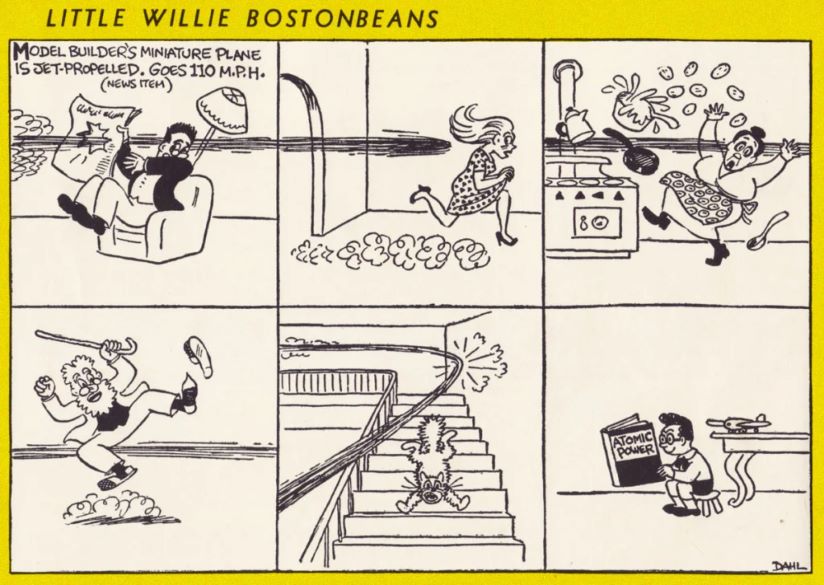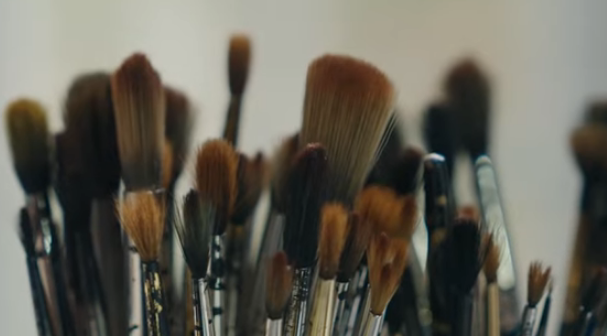SIOUX CITY (KTIV) – He’s one of the most famous people Sioux City has ever produced. A two-time Pulitzer Prize winner, and one of America’s earliest conservationists. And you’ve probably never heard his name.Jay Norwood Darling is better known as “Ding” Darling. “Ding” is the nickname he gave himself. A contraction of his last name.You can almost see the twinkle in his eye in an early photograph with a hat on his head and pen in hand. He drew his first cartoon for a student periodical at Sioux City’s Central High School.
Wayback Wednesday: Dahl, Davenport, Ding
Skip to comments… an item of interest in the humour section: a hardcover volume entitled Dahl’s Brave New World, published 1947. Spare but effective cartooning, plenty of imagination and wit.

By way of biography, Mr. Dahl (1907-1973) thankfully rated an obit in the New York Times on May 7, 1973. Allow me to quote liberally from it:
Mr. Dahl’s cartoons focused on Bostonians and their politics, customs, costumes and foibles, with most of his subjects growing out of local news items.
From 1928, when he began his newspaper career as an $20-a-week illustrator, until last June, Mr. Dahl drew his cartoons for The Boston Herald and its successor, The Herald Traveler. When the paper was purchased by The Record?American last June, he joined The Boston Globe.

Because he concocts his cartoons out of local news items, and refuses to change his ways, mild-mannered Francis Dahl has never been syndicated. But for his collections of reprints, he would be unknown outside New England.
gasp65 at Who’s Out There? presents a selection of Francis W. Dahl‘s post-World War 2 comic strips.


“Homer would depict [Hanna] as this kind of obese guy with a checkered suit,” author and Davenport specialist Gus Frederick describes. “And every single check in the suit was a dollar mark. So he got the name Dollar Mark Hanna.”
Hanna was one of many lampooned by Davenport, who became both feared and admired by both sides of the political aisle. He quickly made a name for himself as a masterful observer of people. His acute wit could cut to the core of any hypocrisy or injustice with a single poignant image.

Some people argue that the impact of Homer Davenport’s editorial cartoons actually tilted the balance of the 1904 presidential election in favor of Theodore Roosevelt.
As we now find ourselves once again in a heated election year, how much has changed in the competitive political trenches over the last century? And how did this country boy from a small Oregon town of Silverton end up rubbing shoulders with America’s political elite at the dawn of the 20th century?
Jacob Pander for Oregon Public Broadcasting profiles editorial cartoonist Homer Davenport.
The article is supported by a six and a half minute audio/visual segment from OPB.
From a small Oregon town comes a larger than life story about a young country boy who ended up becoming one of the world’s highest paid political cartoonists at the dawn of the 20th century. In his early twenties, without any formal art training, Homer Davenport landed a job in California as a caricature artist at William Randolph Hearst’s paper the San Francisco Examiner. He quickly made a name for himself as a masterful observer of people. His acute wit could cut to the core of any hypocrisy or injustice with a single poignant image. Davenport had the gift of gab and rubbed shoulders with America’s political elite, becoming close friends with President Theodor Roosevelt. Some argue that one of his most famous editorial illustrations may have tipped the 1904 election in favor of Roosevelt. But Davenport never lost his love for his hometown of Silverton Oregon, eventually writing a memoir of his rural childhood in the book “The Country Boy”.

Late add.


Larry Wentz for KTIV profiles Sioux City legend Ding Darling in a 3 minute segment – with transcript.
Darling won his first Pulitzer Prize for this 1924 cartoon called “In The Good Old U.S.A.” which shows how people from humble beginnings can work their way up.
His second Pulitzer in 1943 skewered a federal government generating massive amounts of paperwork during World War II.
Here’s something to think about. Ding Darling drew editorial cartoons through prohibition, the labor movement, two World Wars, a depression, and the terms of seven presidents. It’s almost surprising he only won two Pulitzer Prizes!



Comments 3
Comments are closed.